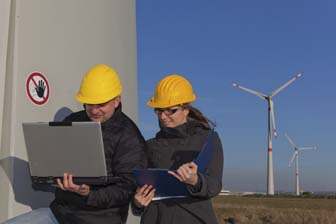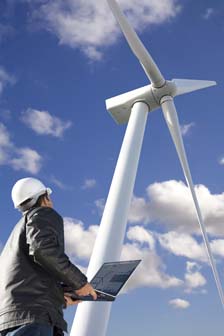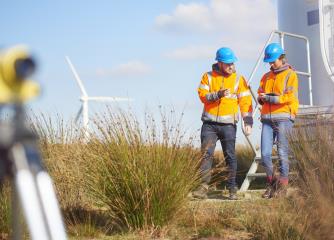Summary
Please enable javascript to play this video.
| Quick Facts: Wind Turbine Technicians | |
|---|---|
|
$62,580 per year
$30.09 per hour |
|
| Postsecondary nondegree award | |
| None | |
| Long-term on-the-job training | |
| 13,600 | |
| 50% (Much faster than average) | |
| 6,800 | |
What Wind Turbine Technicians Do
Wind turbine service technicians maintain and repair wind turbines.
Work Environment
Wind turbine service technicians generally work outdoors, in confined spaces, and often at great heights. Most windtechs work full time, and they also may be on call in the evening or on weekends.
How to Become a Wind Turbine Technician
Wind turbine service technicians typically need a postsecondary nondegree award to enter the occupation. They also typically receive on-the-job training.
Pay
The median annual wage for wind turbine technicians was $62,580 in May 2024.
Job Outlook
Employment of wind turbine technicians is projected to grow 50 percent from 2024 to 2034, much faster than the average for all occupations.
About 2,300 openings for wind turbine technicians are projected each year, on average, over the decade. Many of those openings are expected to result from the need to replace workers who transfer to different occupations or exit the labor force, such as to retire.
State & Area Data
Explore resources for employment and wages by state and area for wind turbine technicians.
Similar Occupations
Compare the job duties, education, job growth, and pay of wind turbine technicians with similar occupations.
More Information, Including Links to O*NET
Learn more about wind turbine technicians by visiting additional resources, including O*NET, a source on key characteristics of workers and occupations.
 United States Department of Labor
United States Department of Labor








